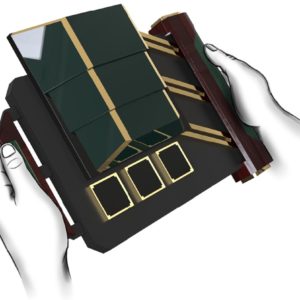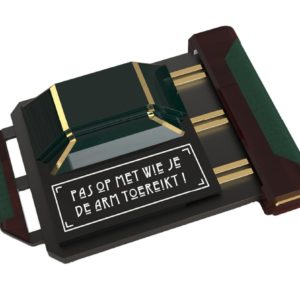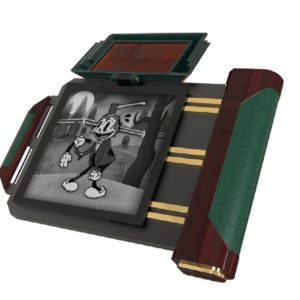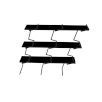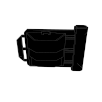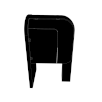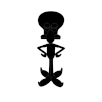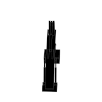Cluelens

User experience
Team: Damien Plancke, Mo Verhallen, Teun Graafmans
Briefing
The assignment for the subject User experience was to design a fictional product that could exist in 20 years. The product shoots a series of photos and constructs a video with them. The processing time must be 24 hours.
Intro
Because this is a project for UX, we needed to make the device rich in interactions. All of the steps, from taking the pictures till watching the video, should have their own unique operation.
Team: Damien Plancke, Mo Verhallen, Teun Graafmans
The assignment for the subject user experience was to design a fictional product that could exist in 20 years. The product shoots a series of photos and constructs a video from them. The processing time must be 24 hours.
Because this is a project for UX, we needed to make the device rich in interactions. All of the steps from taking the pictures till watching the video should have their own unique action to activate.
User experience
Team: Damien Plancke, Mo Verhallen, Teun Graafmans
Briefing
The assignment for the subject user experience was to design a fictional product that could exist in 20 years. The product shoots a series of photos and constructs a video from them. The processing time must be 24 hours.
Intro
Because this is a project for UX, we needed to make the device rich in interactions. All of the steps from taking the pictures till watching the video should have their own unique action to activate.
Context
The product must make the user feel like they are in the middle of a crime tv series from the '20s and '30s in New York. We designed the dossier like a newspaper from that time to emphasize this feeling.
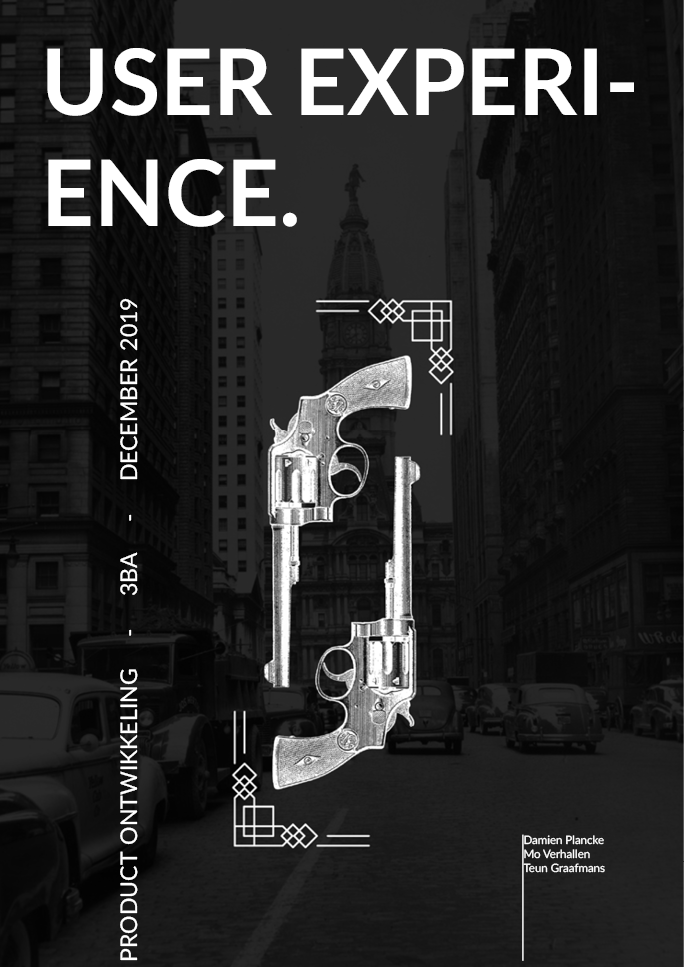
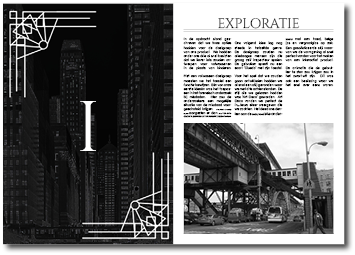
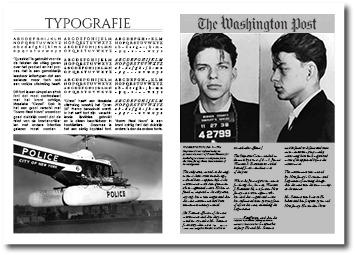
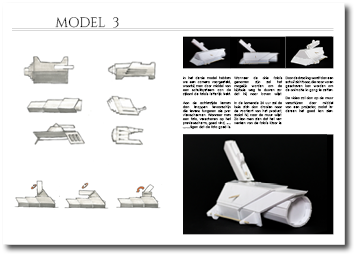
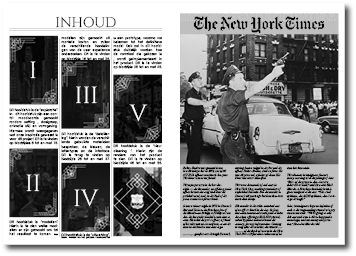
Lay-out
The product must make the user feel like they are in the middle of a crime tv series from the ’20s and ’30s in New York. Therefore we designed the dossier like a newspaper from that time.
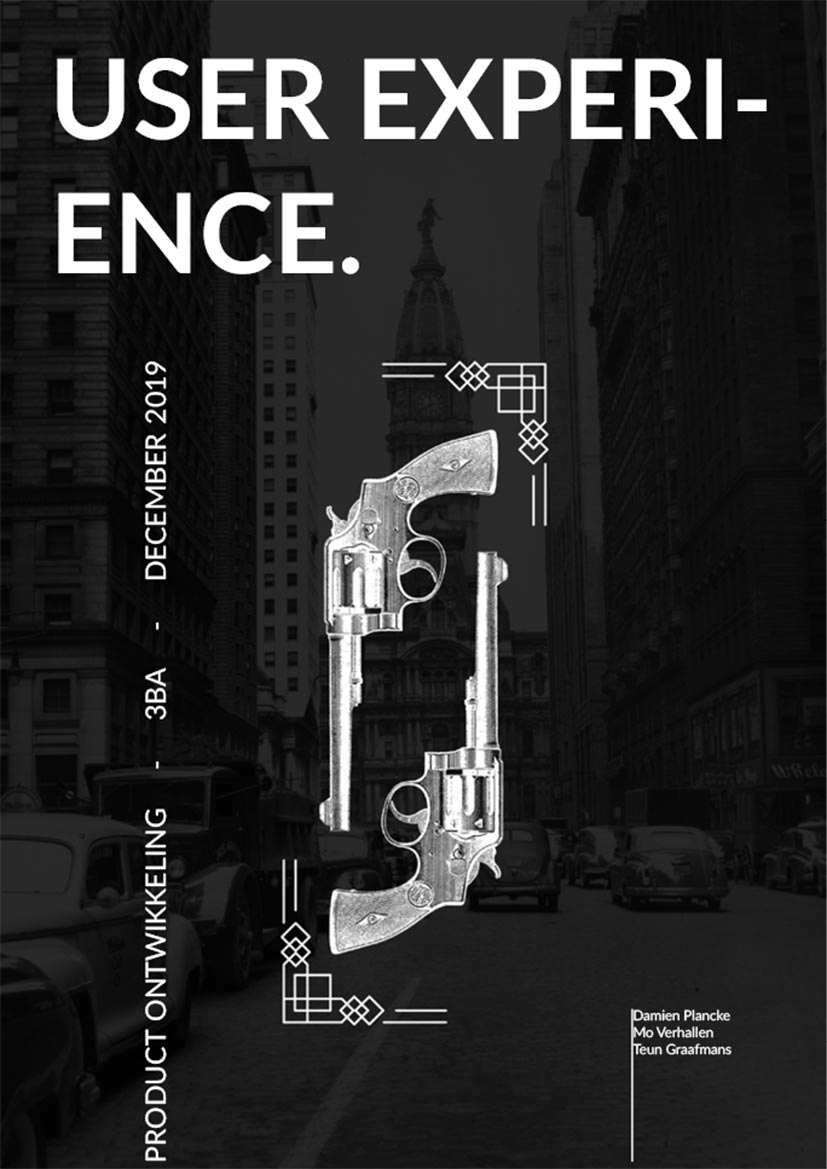




Exploration
We made several mood boards to guide us in our design process. We made mood boards for design language, target group, animation style and setting.
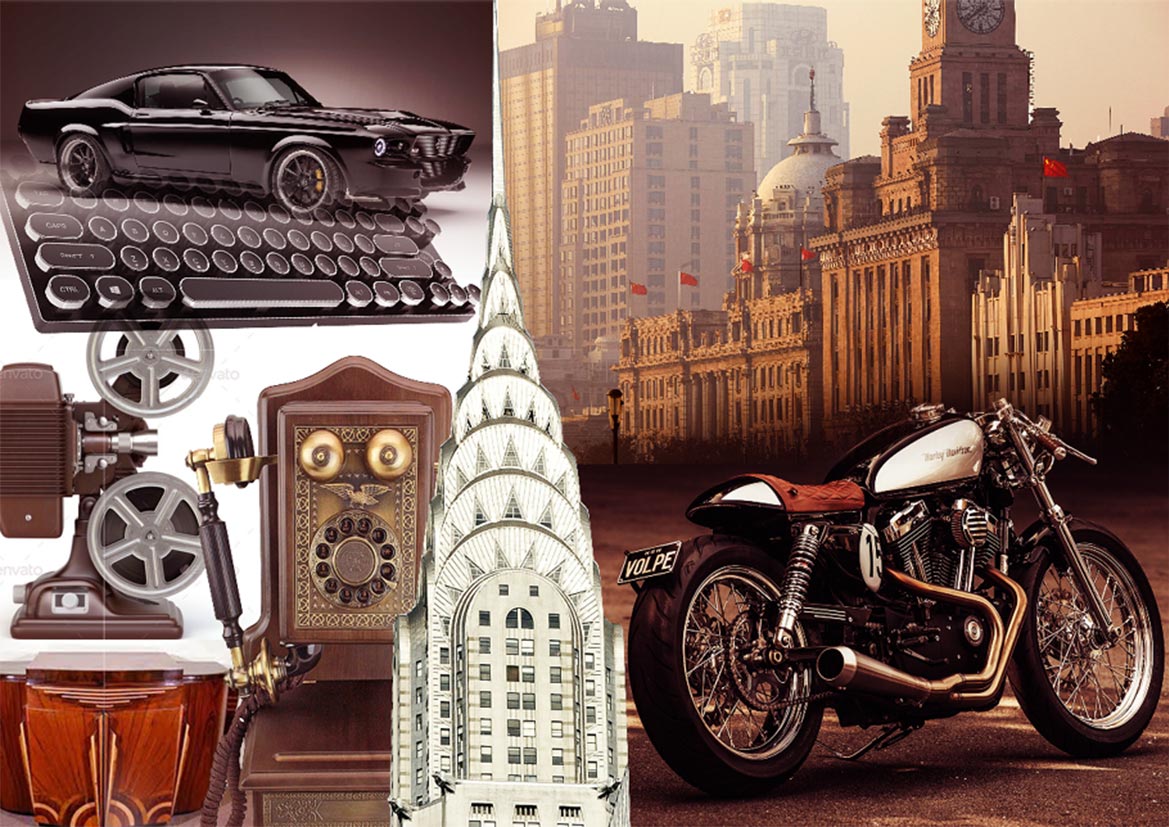
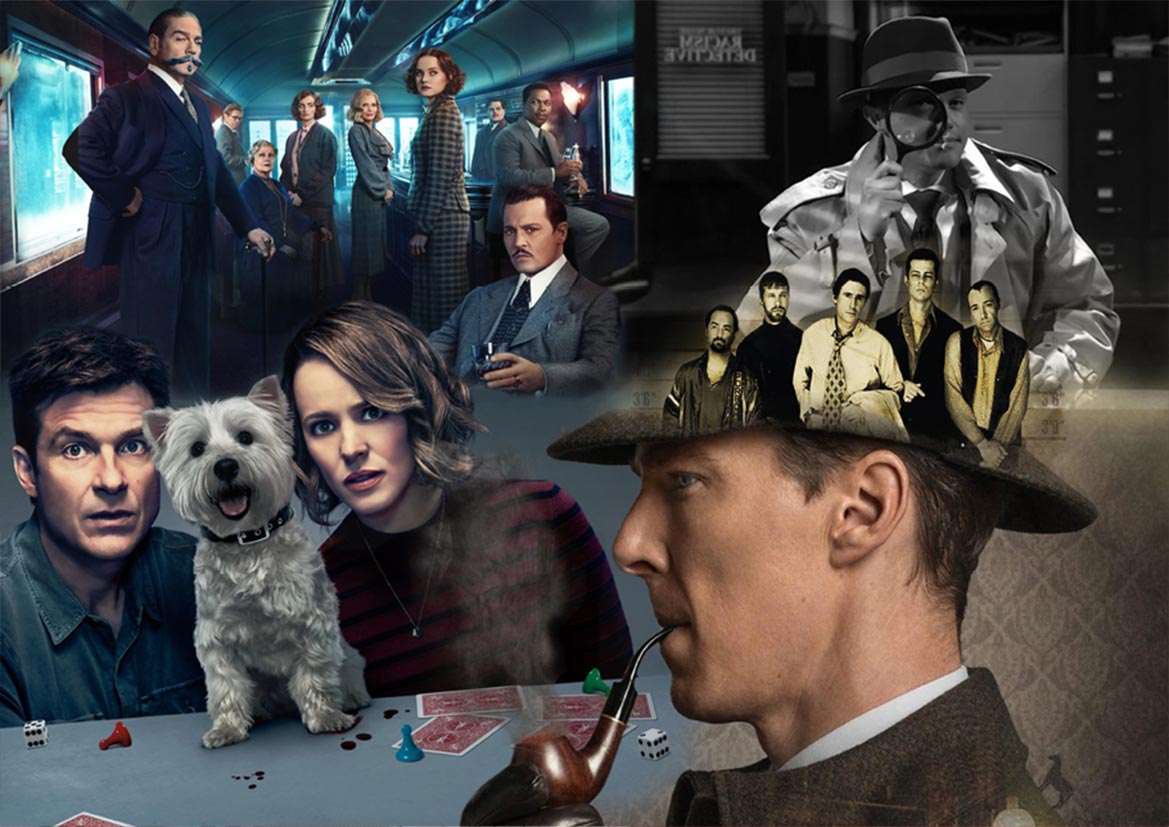
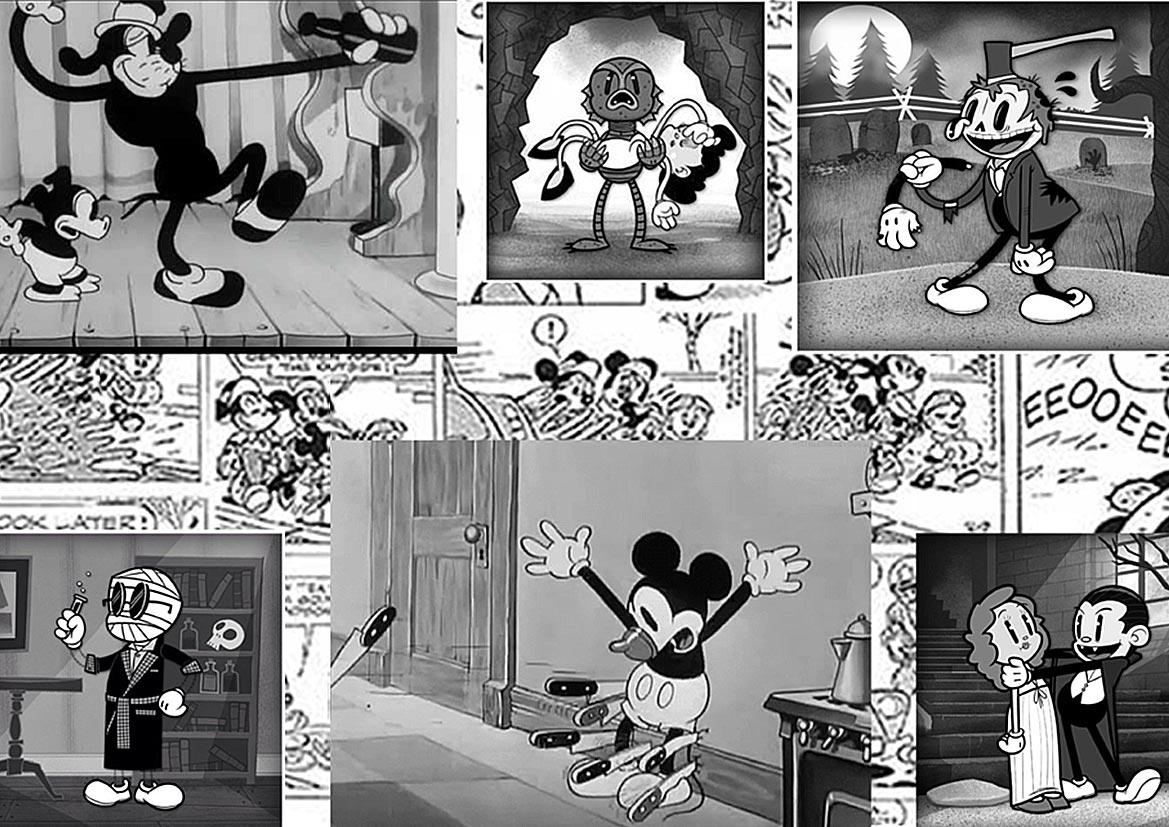
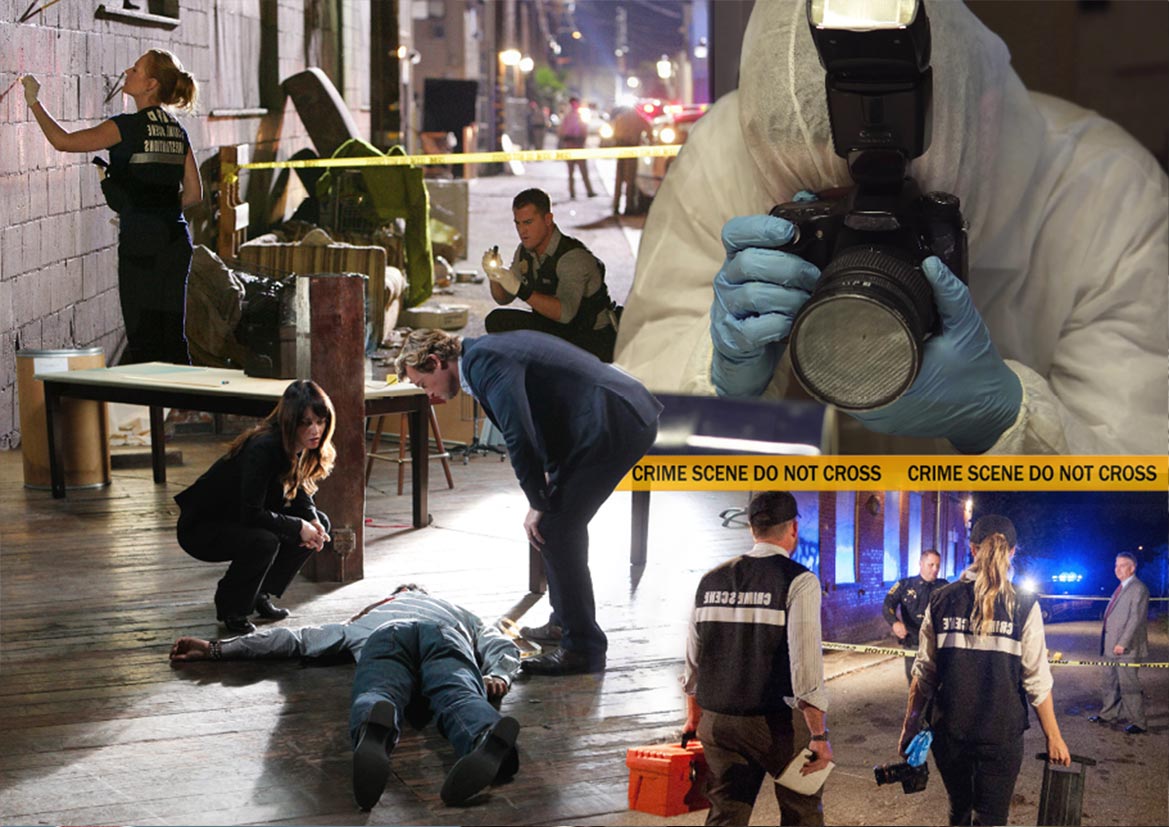
Ideation
To emphasize the vibe of the ‘20s and ‘30s more, we applied some art deco elements in our design language. For inspiration, we’ve looked at art deco buildings in New York like the Chrysler tower. This resulted in a geometric design with a lot of parallel straight lines.

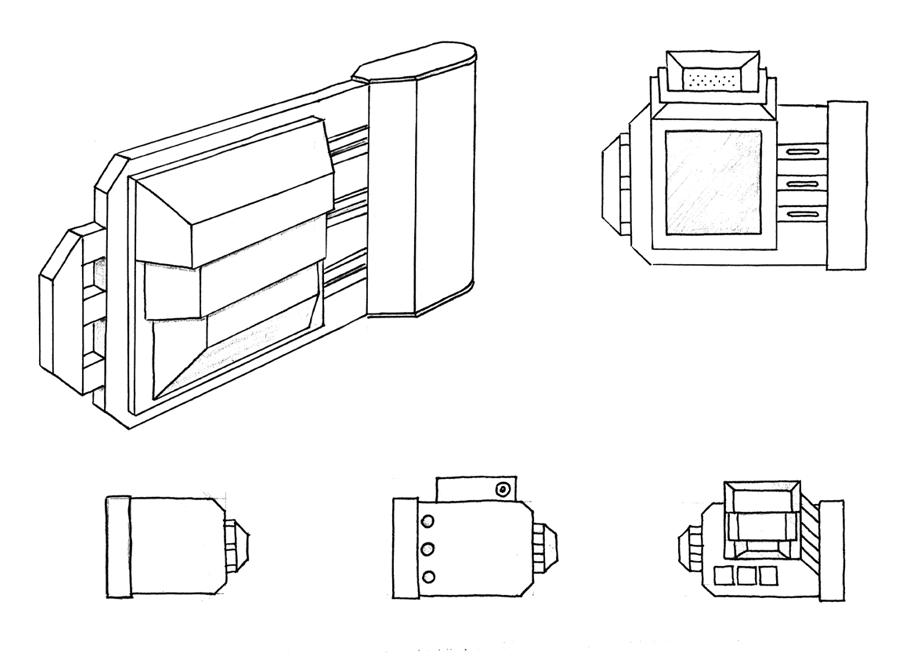
Ideation
To emphasize the vibe of the ‘20s and ‘30s, we applied some art deco elements in our design language. For inspiration, we’ve looked at art deco buildings in New York like the Chrysler tower. This resulted in a bit box like design with a lot of parallel straight lines.
Prototyping
We've made four prototypes out of white foam board. We tested different ways to interact with the product.
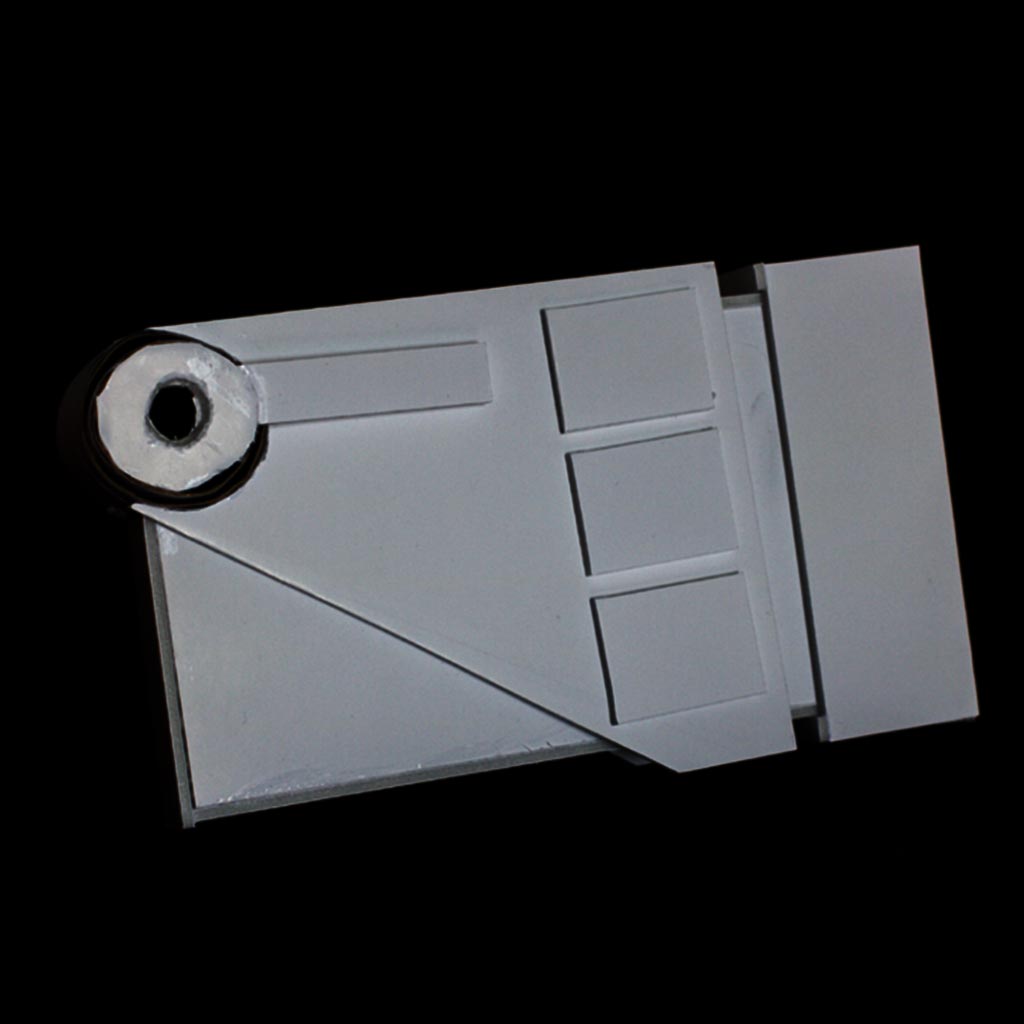


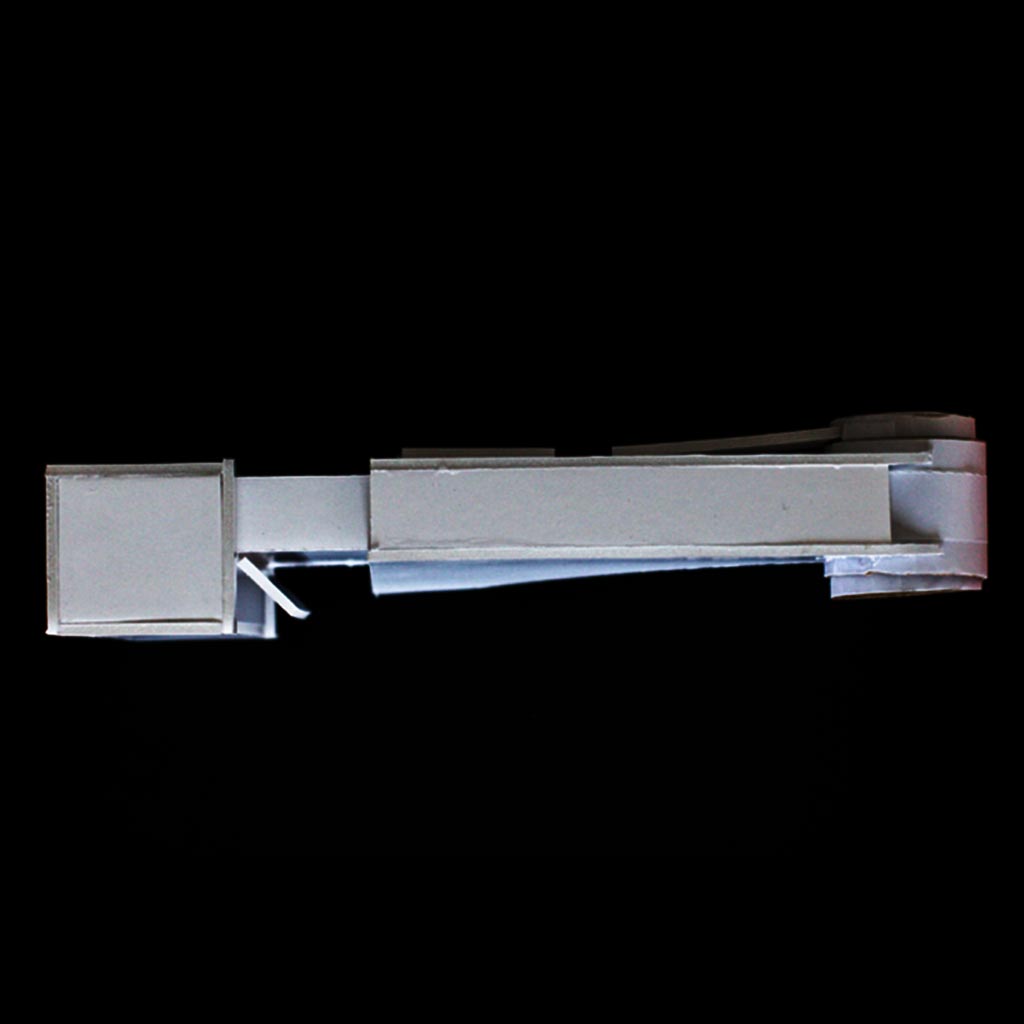

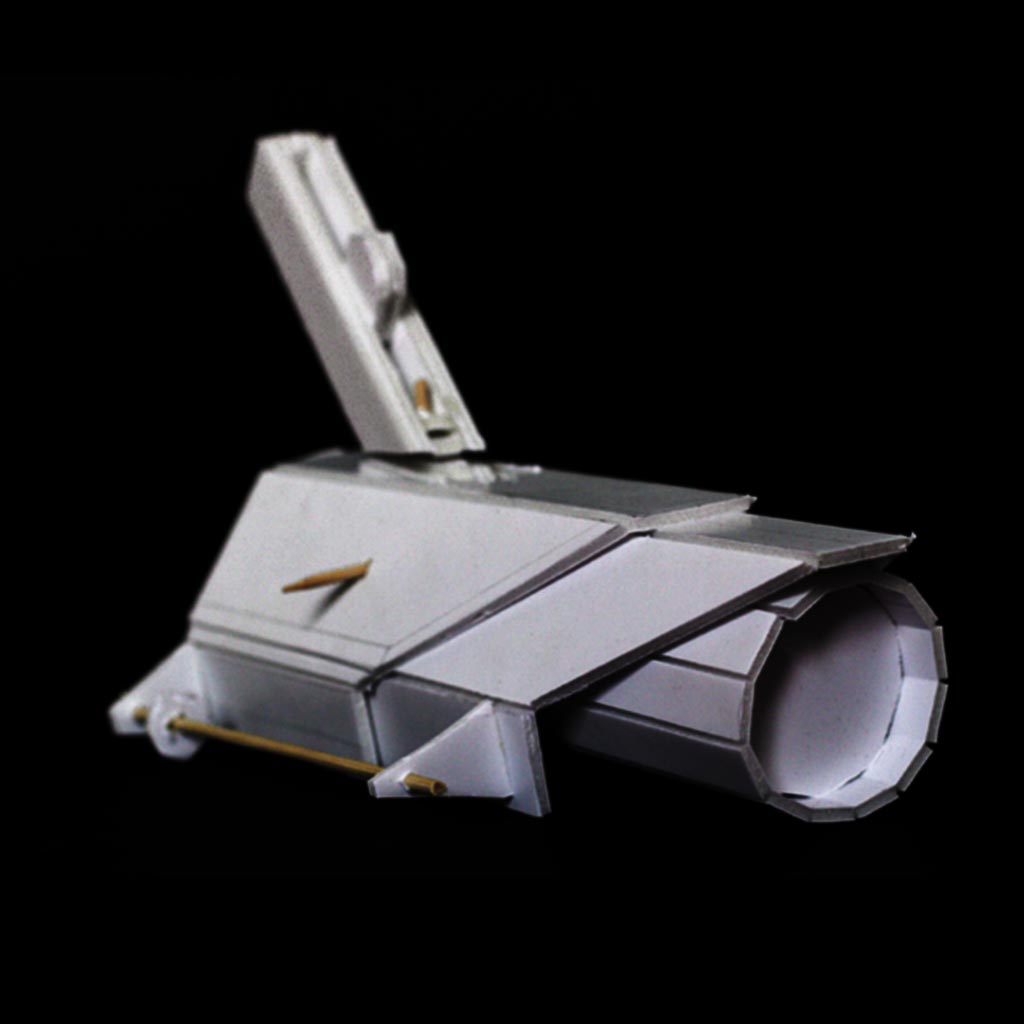
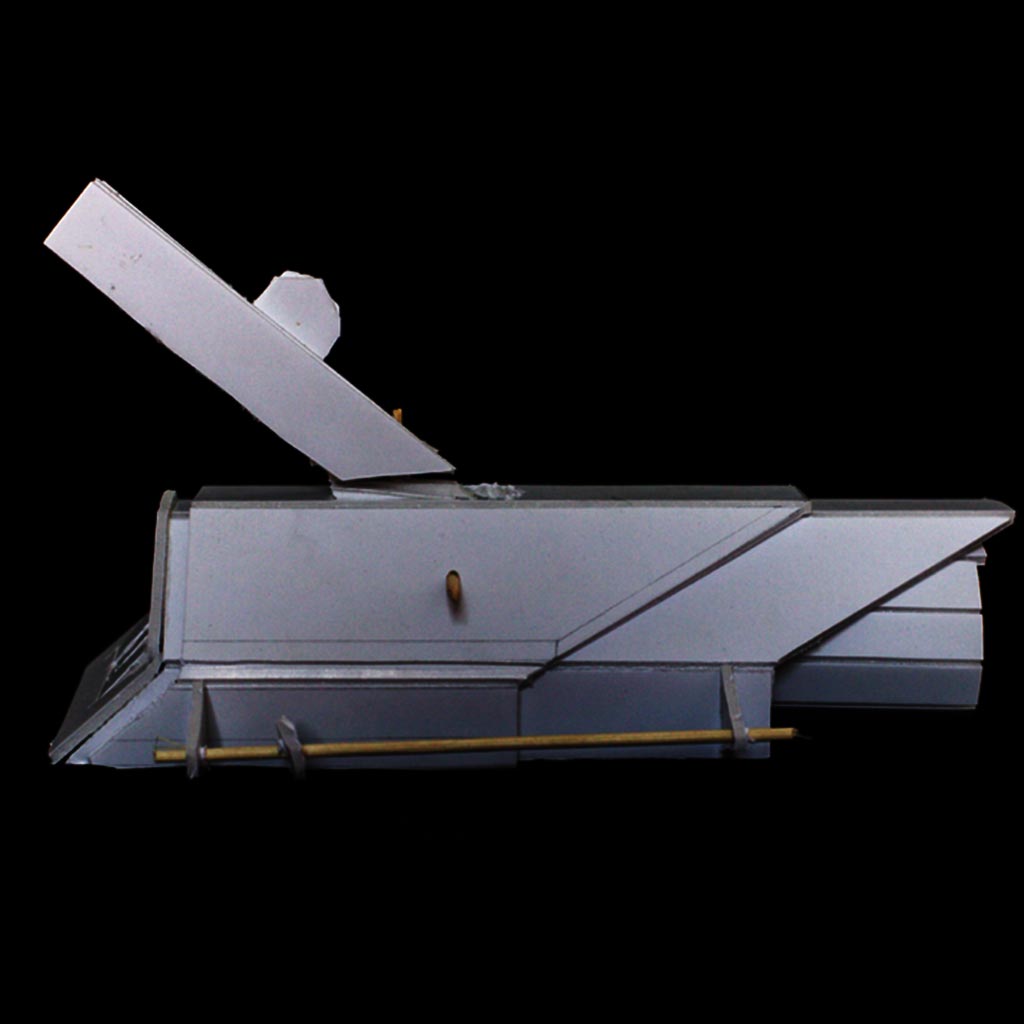
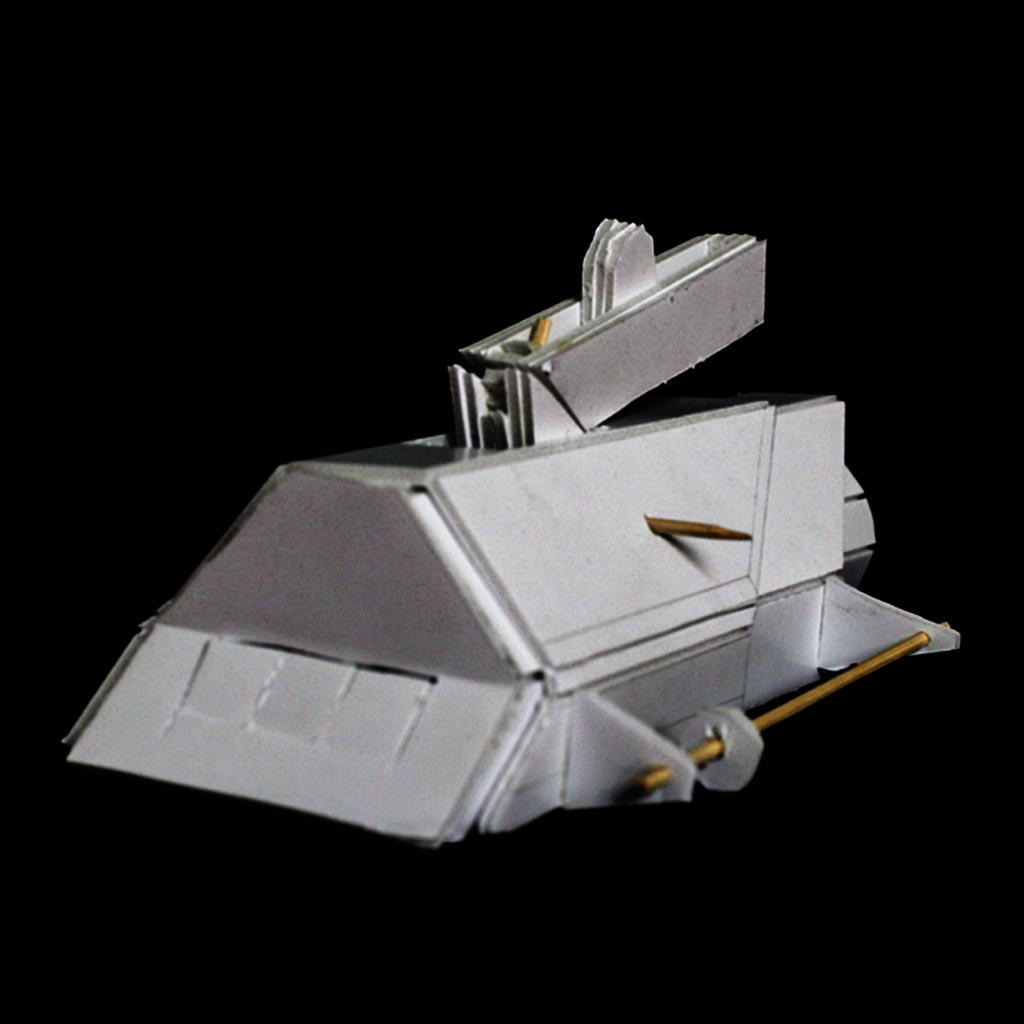


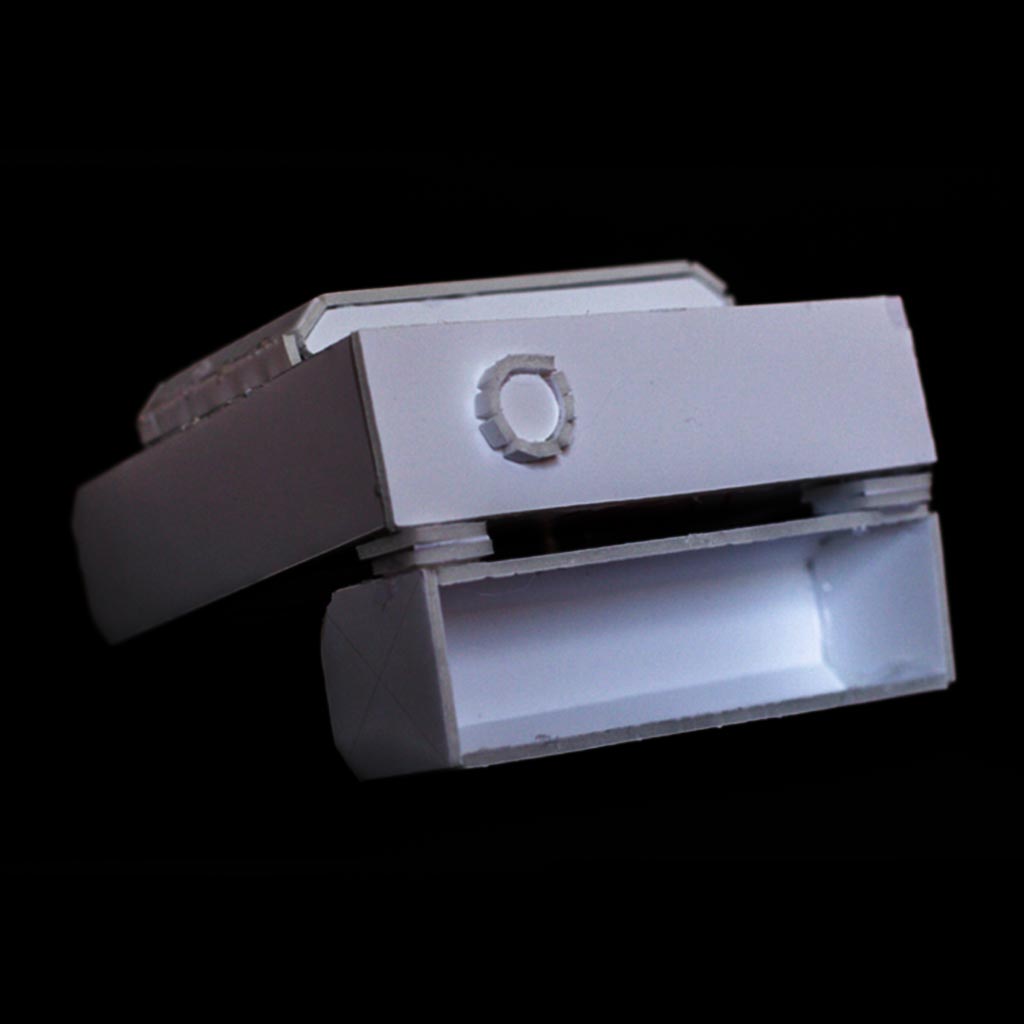
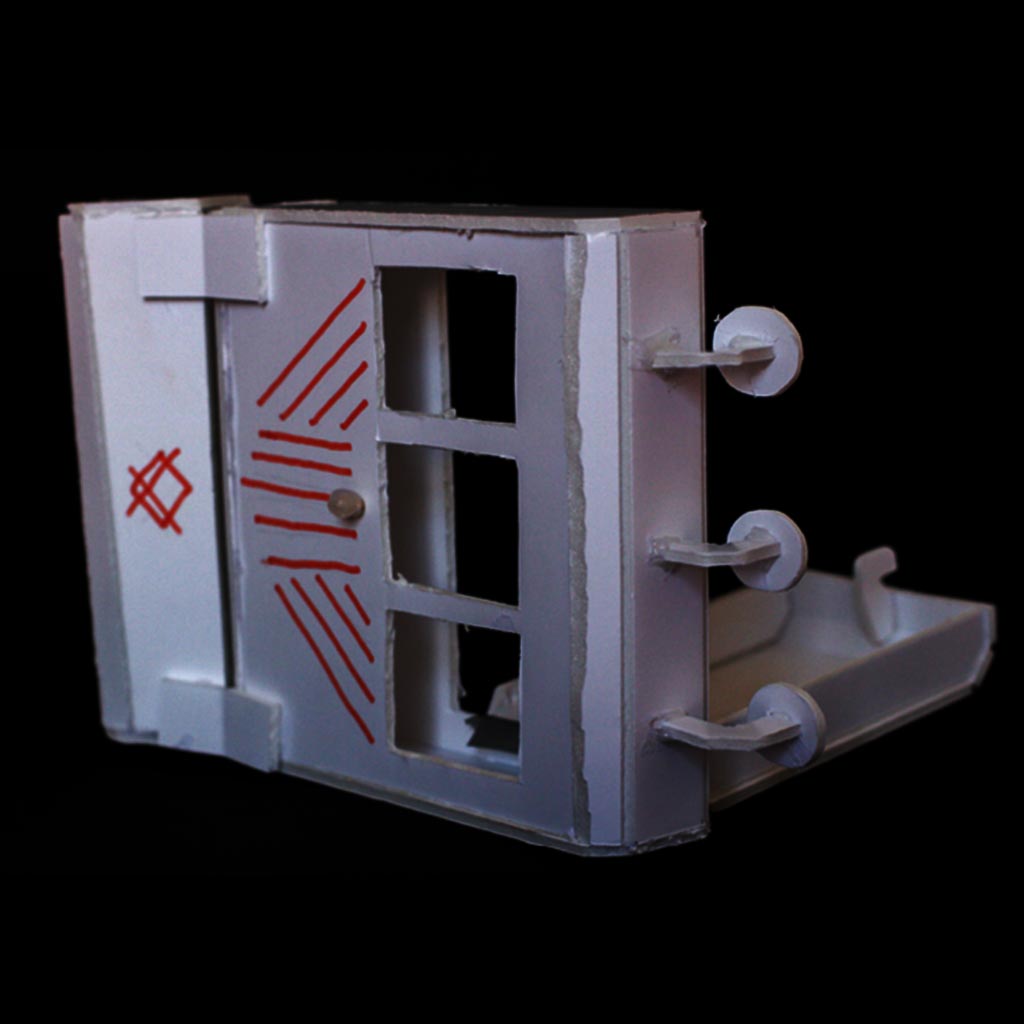

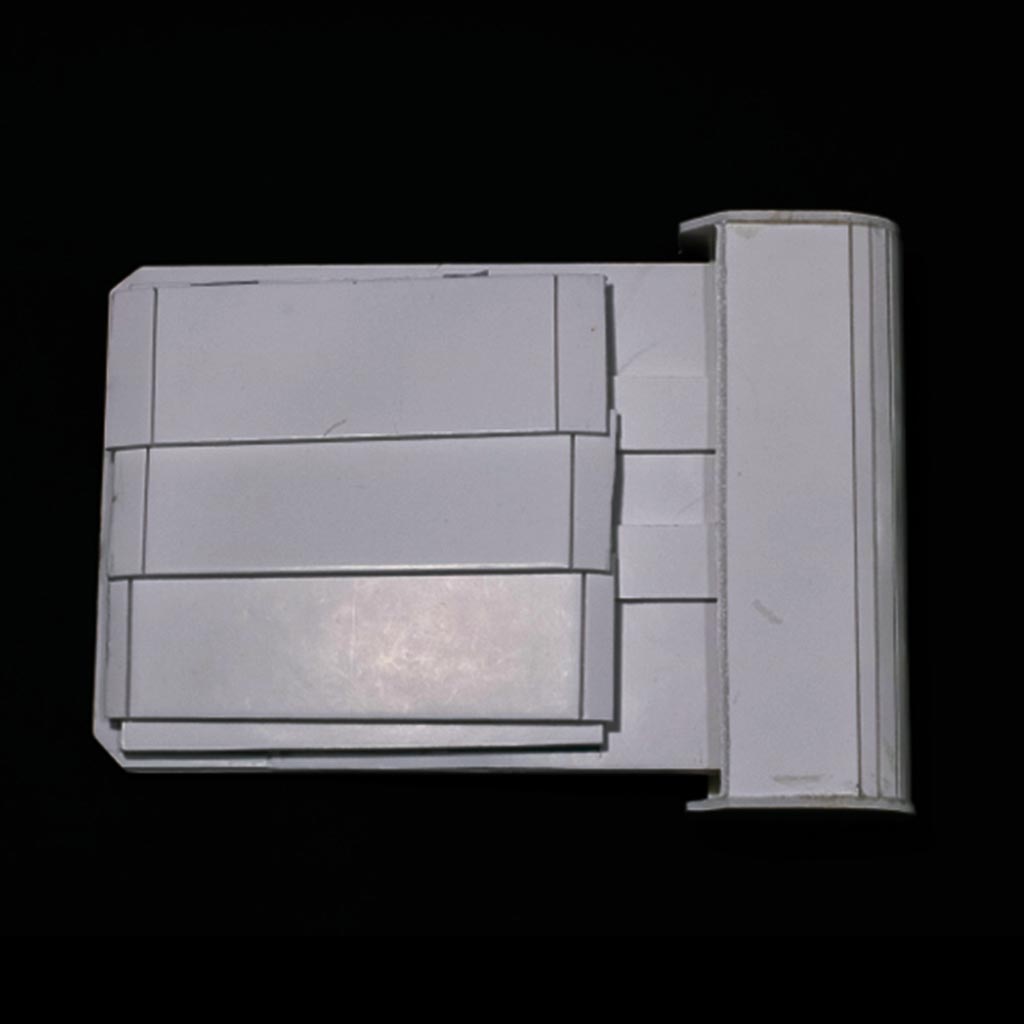
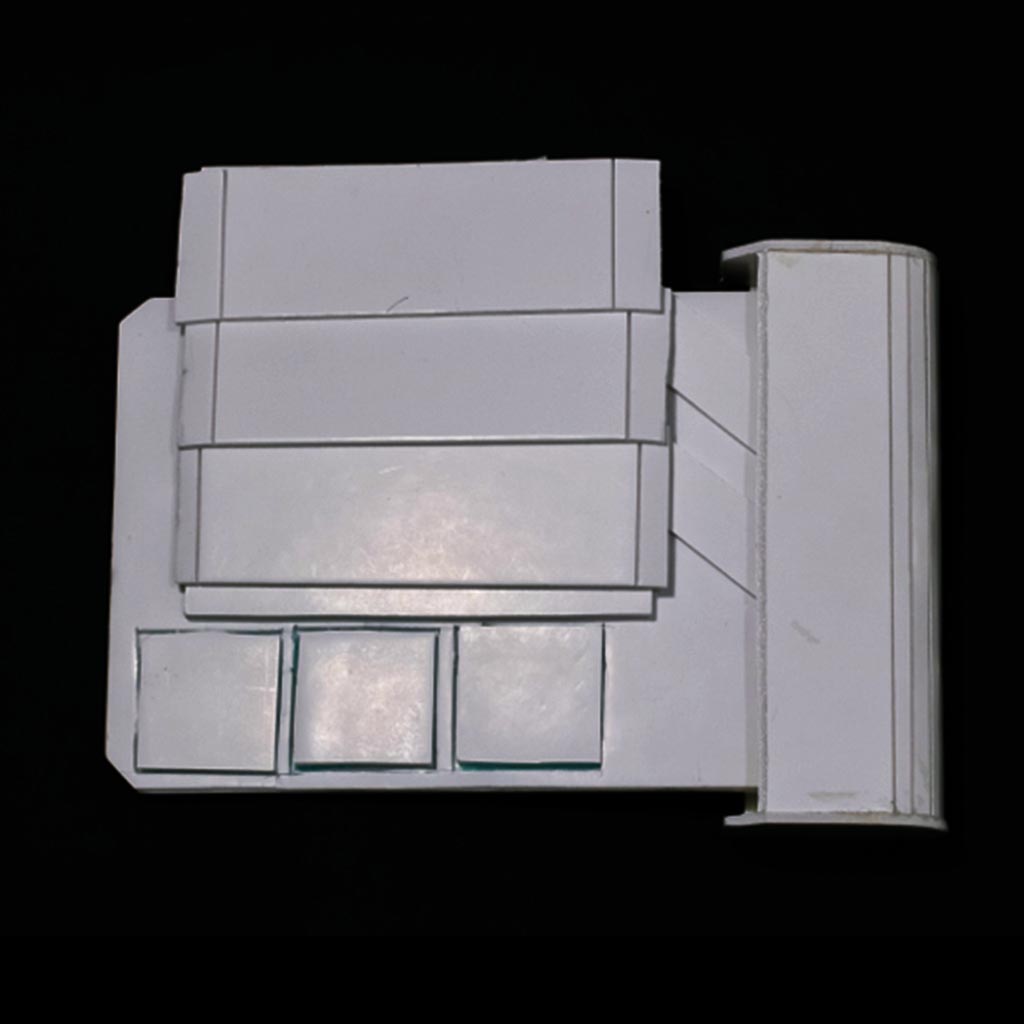
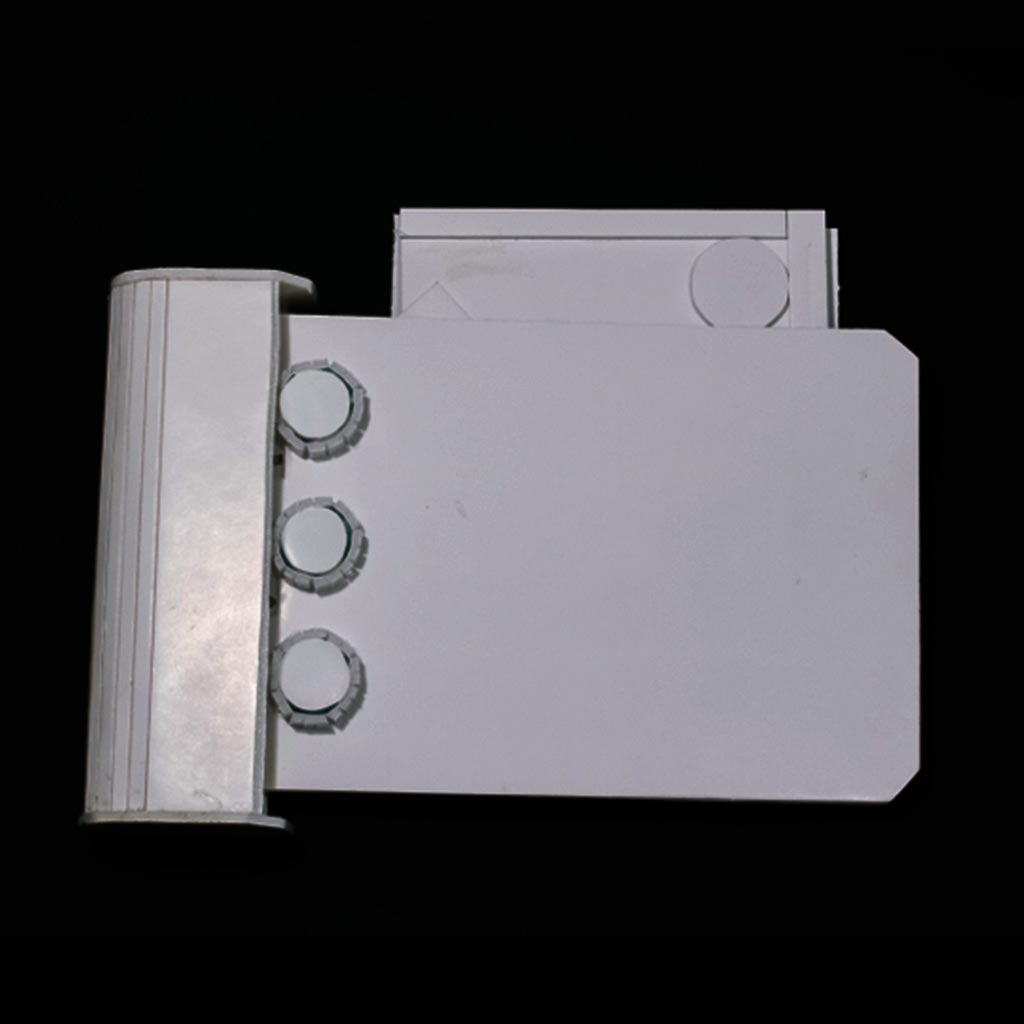
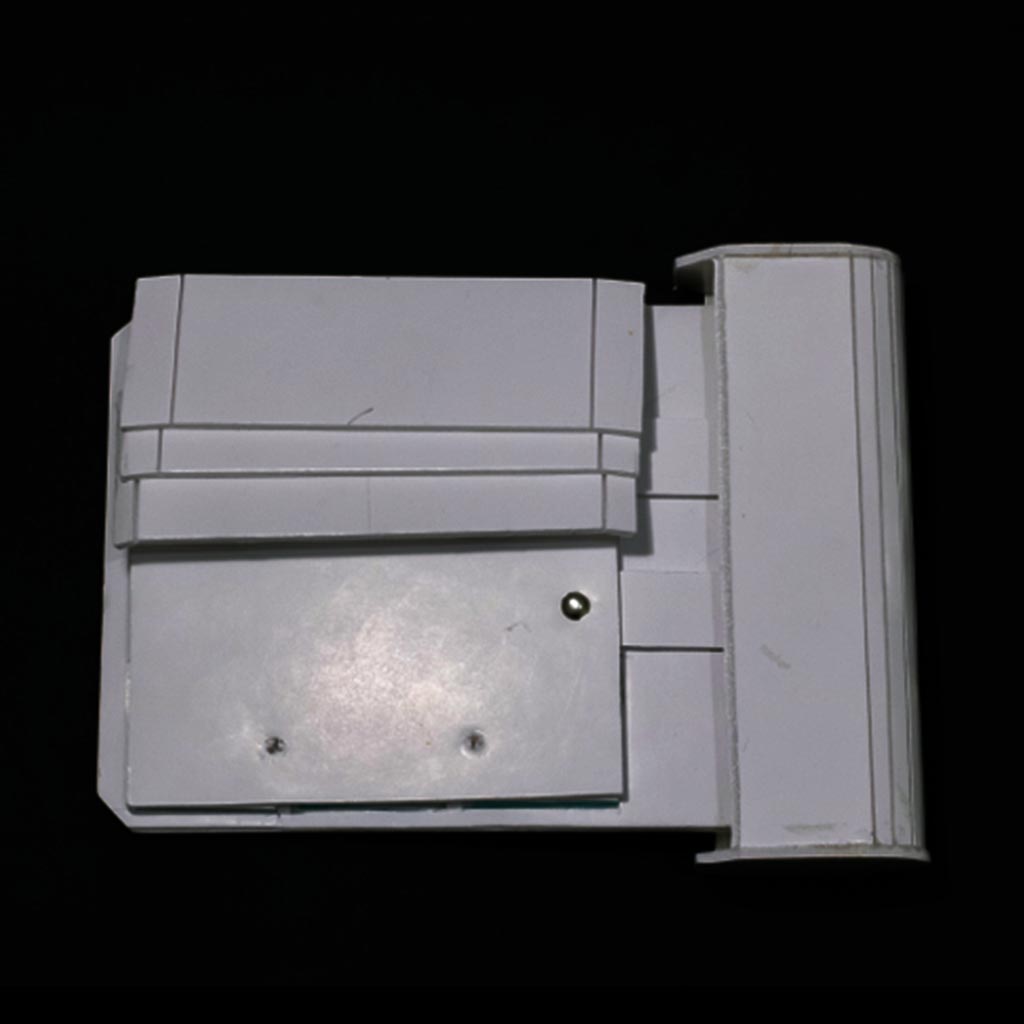
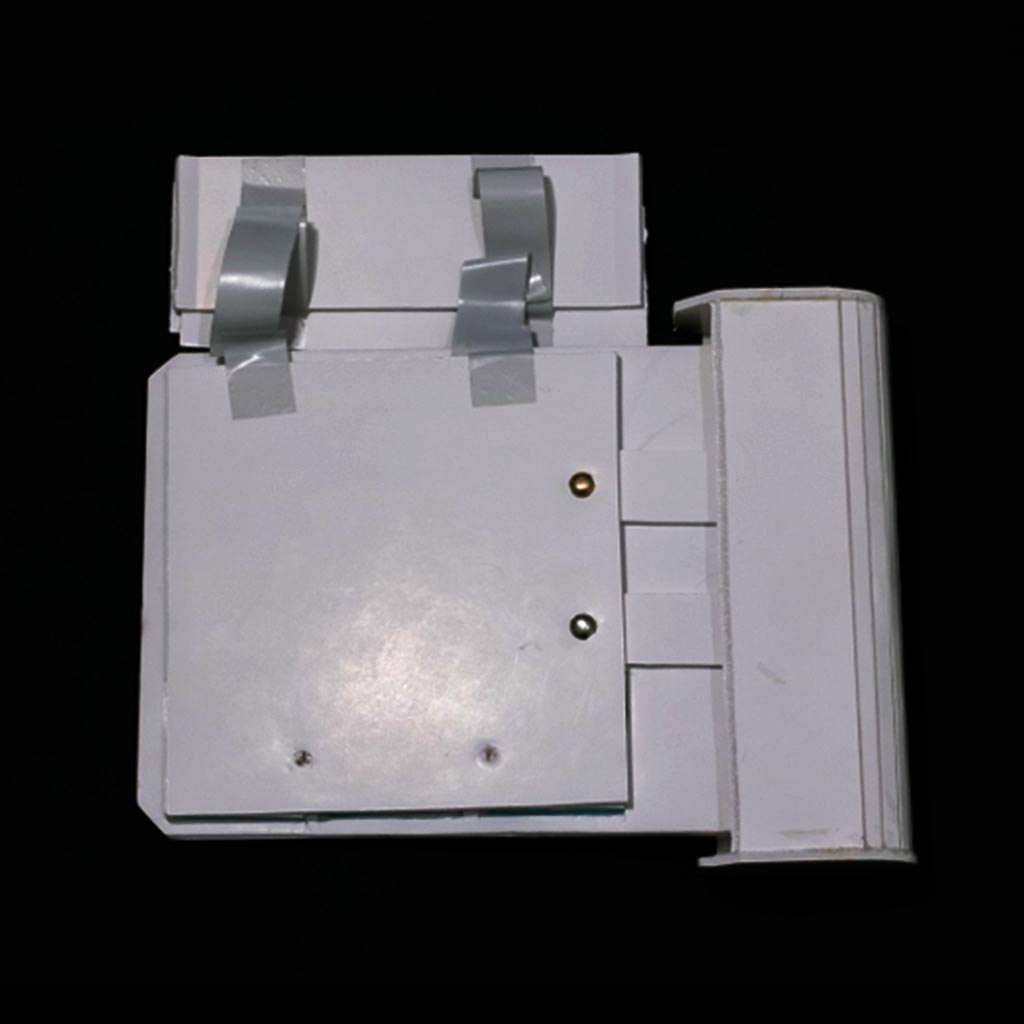
Final prototype
We cherry picked the best interactions and combined them in the final prototype.


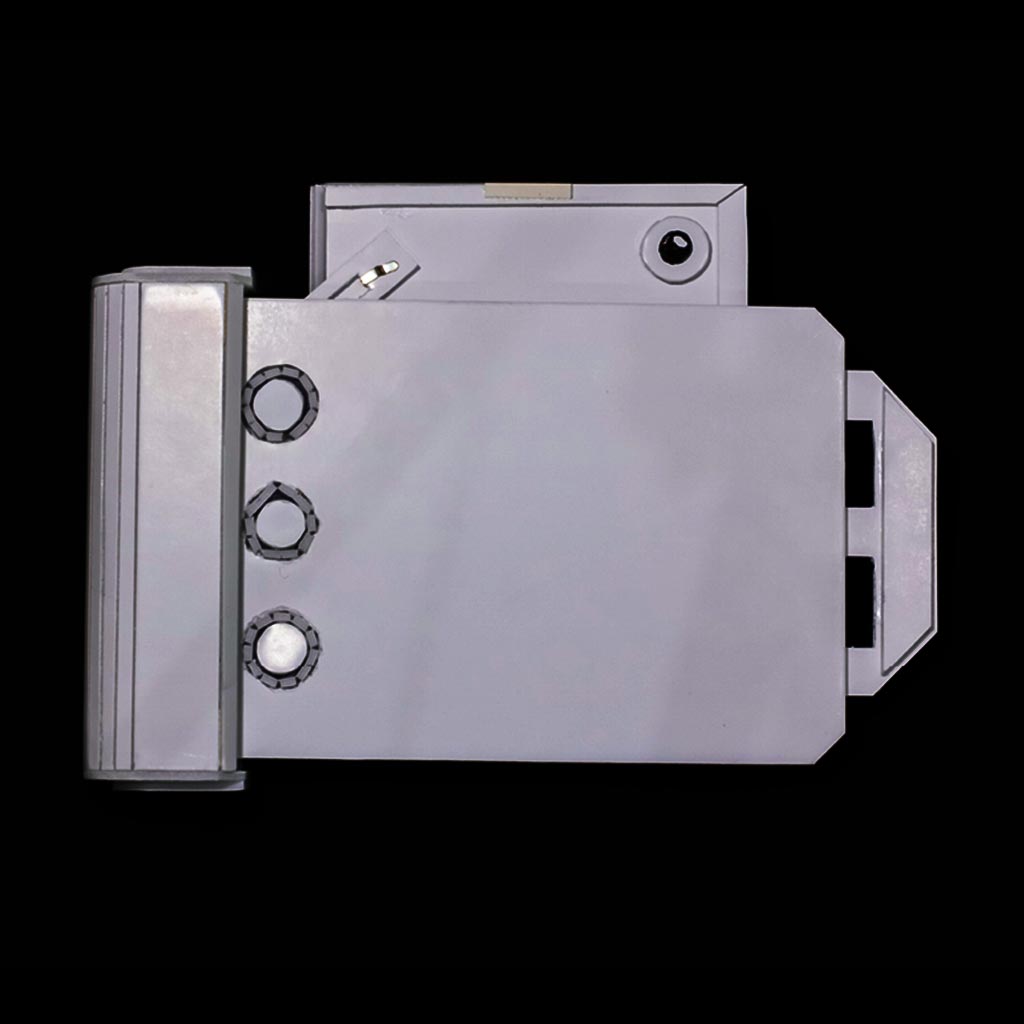

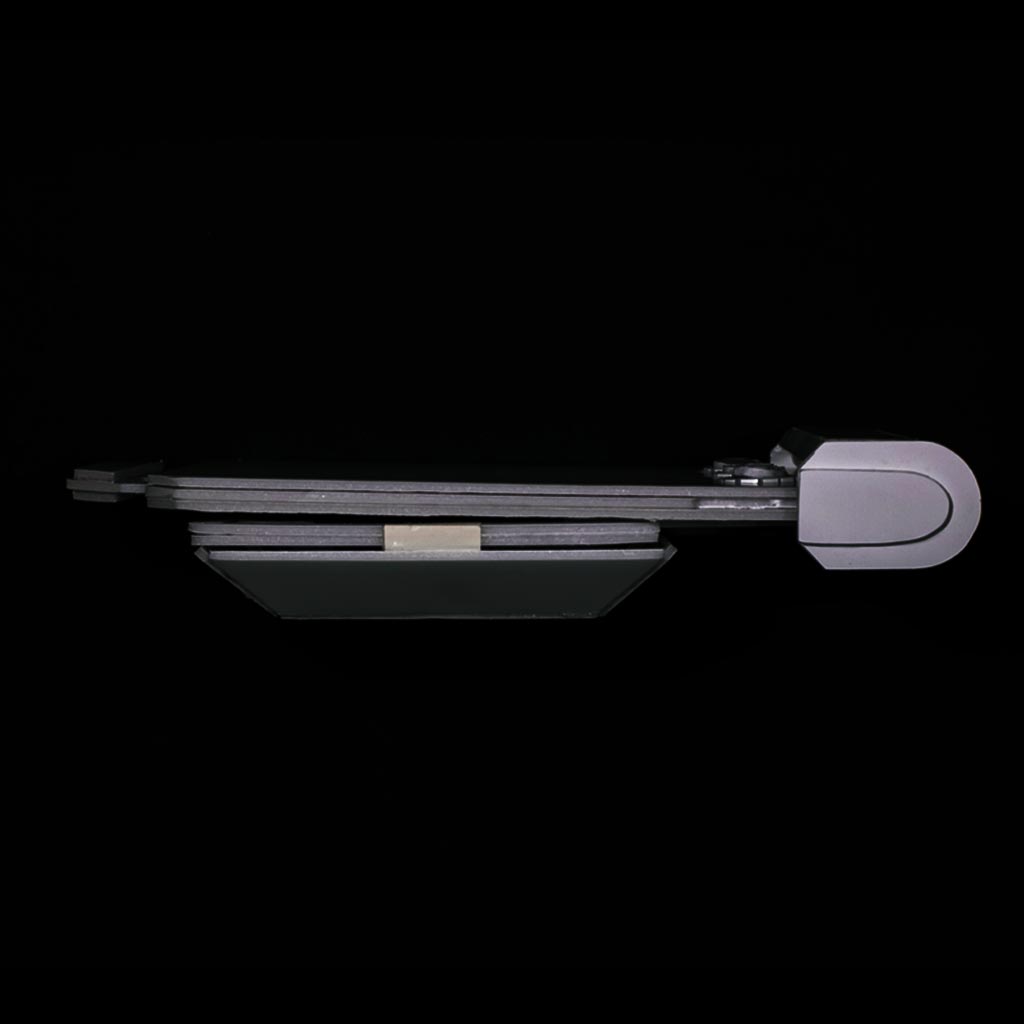
Turn on
The handle can be pulled out, turning the device on, revealing three shutter buttons on the back and revealing the preview screens on the front.
Take pictures
The three individual buttons represent one image each. If a picture is taken, a preview screen on the front will pop up. If a picture needs to be retaken, the matching button on the back can be pressed again.
Confirm pictures
If the user is satisfied with the result, they press the preview screen back down.
Start processing
When all three screens are all pushed back in, the device can be closed and the processing of the video starts.
View result
After 23 hours, the device shows a clue for the solution. An hour later, the full solution is shown.
Renders
We've modeled the final concept in Solidworks and rendered it in Keyshot. Afterwards, the renders were finalized in Photoshop and Sketchbook.
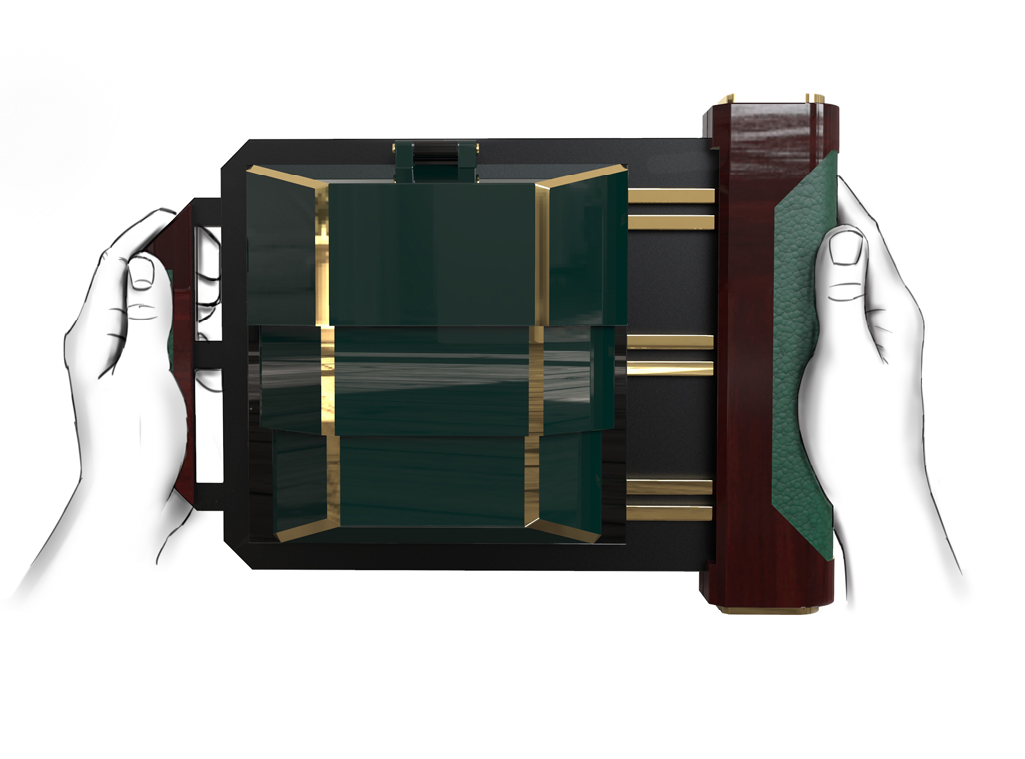
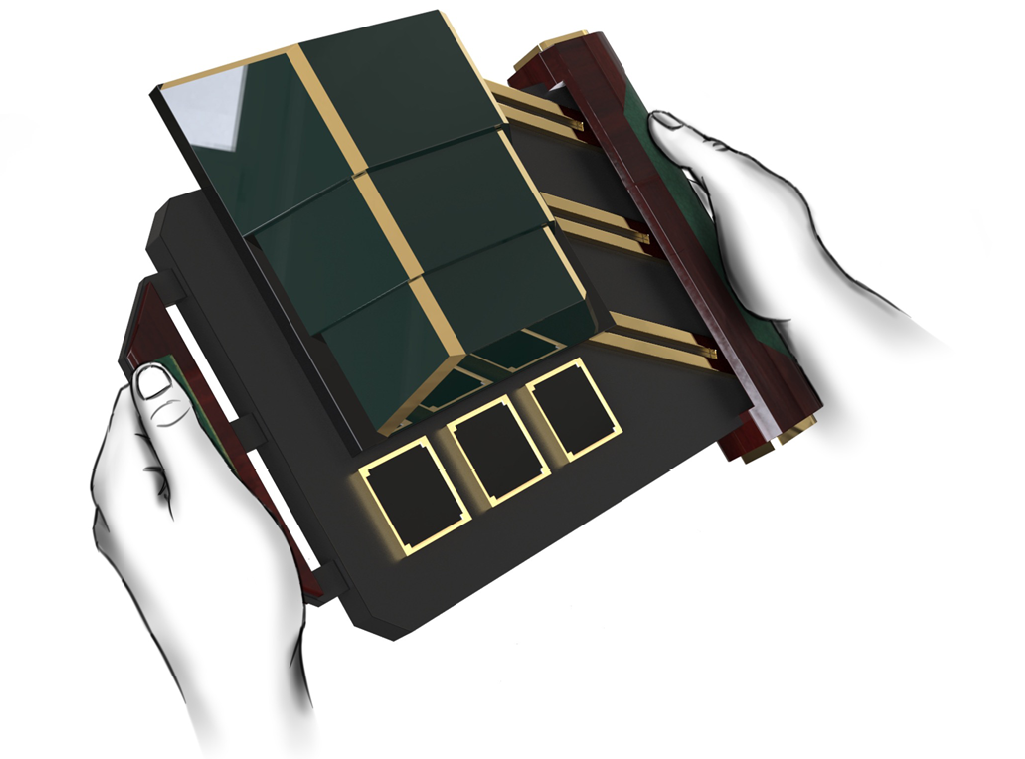
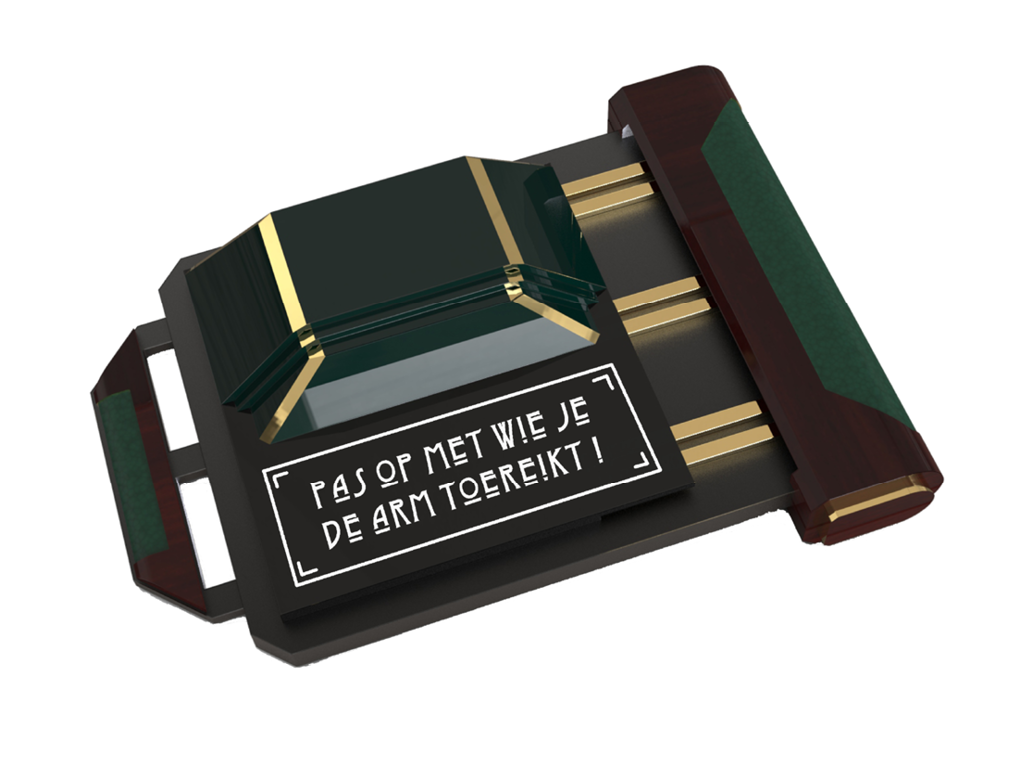
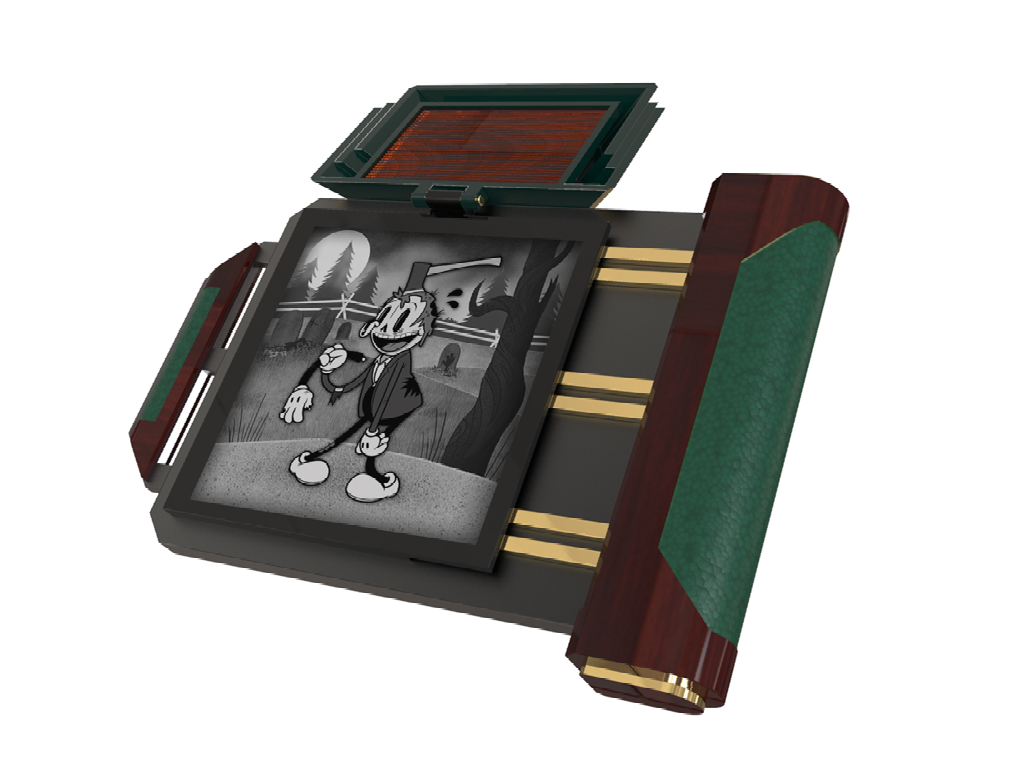
Presentation video
We made a presentation video to communicate the idea clearly. The video starts with a stop motion overview and then an example of use.

